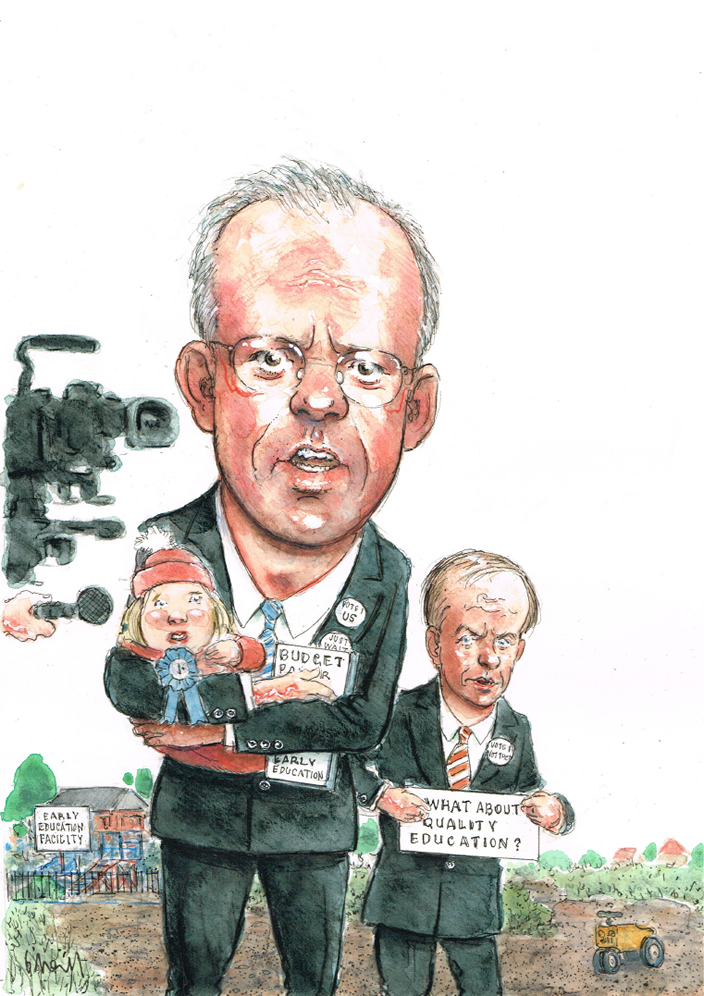
“$3.5 billion more for childcare!” That’s what the headlines in the newspapers read in the lead up to, and after, the Federal Budget, Early Childhood Consultant Lisa Bryant writes.
It was hard to turn on a TV news show without seeing a politician with children at a service – whether it was Scott Morrison doing the ‘Wombat Wobble’ or children looking somewhat uncomfortable around the Prime Minister.
But what does it all really mean for educator and care services and for early childhood teachers? Will it make things easier? Will fees reduce for parents? Does it really represent a major ‘child care’ overhaul?
Let’s look at what the main changes are first and then we can examine their impact.
A new single child care subsidy
This is the major change. From July 2017 (yes, two years ahead) existing payments like Child Care Benefit (CCB) and Child Care Rebate (CCR) will be combined into one new payment – the Child Care Subsidy (CCS). (By the way, get used to having to decode a lot of new acronyms).
The Child Care Subsidy will be paid directly to services through the Child Care Management System (CCMS). Families will no longer be able to opt to have it paid to them.
The Child Care Subsidy will be based on a mean benchmark cost varying for different service types. The Registered Child Care Benefit category (used by preschool parents) will no longer exist.
Families will be subject to an activity test. Families essentially will be able to receive access to more subsidised childcare the more they work, study, train or volunteer.
The Child Care Subsidy will replace the existing CCB and CCR so only services which are eligible to receive these on behalf of families will be eligible. Sorry NSW preschools!
A child care safety net
This is the section which will impact education and care services. It consists of three components – an Additional Child Care Subsidy (ACCS), and Inclusion Support Program (ISP) and a Community Child Care Fund (CCCF).
Additional Child Care Subsidy
This starts in July 2017 and is similar to the Special CCB but is only for children at risk, families with temporary income drops and families coming off benefits. Periods of benefits are shorter (for children at risk it is six weeks then additional 13-week periods, for others a maximum of 13 weeks) and some categories appear to be removed eg Grandparent Child Care Benefit.
Inclusion Support Program
This starts in July 2016 and is similar to the old Inclusion and Professional Support Program (IPSP) and will have a subsidy for services to employ an additional worker to assist inclusion of children with extra needs (Inclusion Support Subsidy?) bicultural support, specialist equipment and access to “practical inclusion advice and support” – it is not clear if this means the Inclusion Support Agencies will be retained. It appears as if funded professional development has been removed, which will obviously impact on early childhood teachers greatly.
Community Child Care Fund
This starts in July 2017 and is similar to the old Community Support Program but is based on a competitive grant program where services will apply for additional funds to address barriers for disadvantaged children, to help services be viable in areas where they otherwise wouldn’t be, to help reduce fees for low income families in areas like Sydney and to develop new centres and mobile services. With the start of this program services receiving funding for operational and sustainability support under the Community Support Program will face changes.
A nanny trial
This won’t affect education and care services that much (4000 nannies, 10,000 children across Australia). Nannies do have to be linked to an approved provider so some long day care services, family day care services or in-home care services may be involved in the program this way. Interestingly nannies will not need any qualification other than first aid. (After all, looking after children is just babysitting, right? Why does one need a qualification for this?)
Universal Access funding extended for two years
The Universal Access funding from the Commonwealth to the states has been extended for another two years till the end of 2017.



































































































































